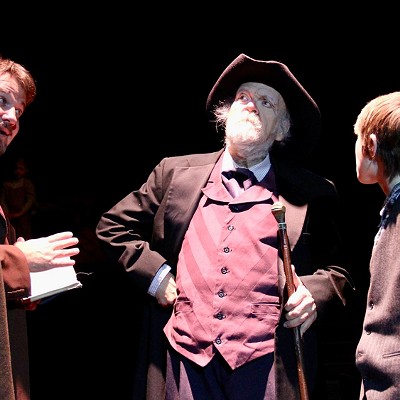
The council meets Tuesday to discuss the route, already approved by two MAPS 3 citizen panels. It includes Bricktown, the downtown business district, Automobile Alley and Midtown. It will come within a block of the proposed 70-acre downtown public park with a possible extension to the University of Oklahoma Health Sciences Center.
“This is huge for us and huge for transportation overall in Oklahoma City,” said Nathaniel Harding, chairman of the Modern Streetcar subcommittee that has delved into the project’s details, route and technical issues over the last three years.
The route is considered still in progress because of design options that have not been finalized, Harding said, including the specific connection to the Midtown area and whether the Broadway Avenue segment will have a double track or form a couplet with Robinson Avenue.
OKC Mayor Mick Cornett acknowledged that debate about the recommended route likely will occur Tuesday.
“You could ask 10 different people and you might get 10 different routes,” he said. “There’s lots of ways to do it, but at the end of the day, you have to pick one and go with it. There’s been considerable study and debate, but now it’s time to put the rails in the ground.”
Cornett compared the controversial streetcar project to the canal, which was built using the original MAPS funding.
“After
all was said and done, it (the canal) became one of the most popular
aspects of that initiative. The citizens have tasked us with building it
(the streetcar system), not talking about it.”
Specific
attractions scheduled for construction along the 4.5-mile route will
include the future MAPS 3 convention center and the future intermodal
hub, which will be located at the Santa Fe railroad station.
Officials
with project consultant Jacobs Engineering estimate the streetcar
construction cost between $99 million and $109 million, with annual
operation and maintenance expenses ranging from $2.5 million to $3
million.
Still, Ward 2
Councilman Ed Shadid, an outspoken critic of the project, wants
specifics on how the city will fund operation and maintenance.
“It’s
easy to build things, but it takes more sophistication to operate them
and maintain them,” he said in an earlier interview.
Cathy
O’Connor, president and chief executive officer of The Alliance for
Economic Development of Oklahoma City, told the streetcar subcommittee
this summer that she intended to meet with property owners along the
recommended route to gauge their interest in forming a business
improvement district (BID) or a tax increment financing (TIF) district.
Typically, a business improvement district requires property
owners in a specific geographic region to pay assessed fees for detailed
improvements. In this case, city officials have said BID assessments or
TIF money could pay for the streetcar system’s operation and
maintenance.
O’Connor, speaking through her public relations firm, declined to comment to Oklahoma Gazette on
the meetings or provide a report detailing property owners’ interests.
Josh Harlow of Jones Public Relations said O’Connor would not publicly
disclose the findings until she presented them to the streetcar
subcommittee on Wednesday, Sept. 25.
Shadid
contends the meetings with property owners should have been held months
before the route was approved to create a “bidding war” for the
eventual streetcar route.
“Why would anyone want to pay now? They know where the route is going,” the councilman said.
“There
were four city councilmen who requested at the beginning of the year
that property owners on different (downtown) streets be contacted, but
it wasn’t done. It’s stunning it wasn’t and even more stunning that four
councilmen asked for it and it still wasn’t done.
Property owners are not going to help pay for the operations if you don’t ask the question.”
Shadid said he was surprised when O’Connor announced the Alliance was conducting meetings with streetcar route property owners.
“I’m still waiting (for the report),” he said.











